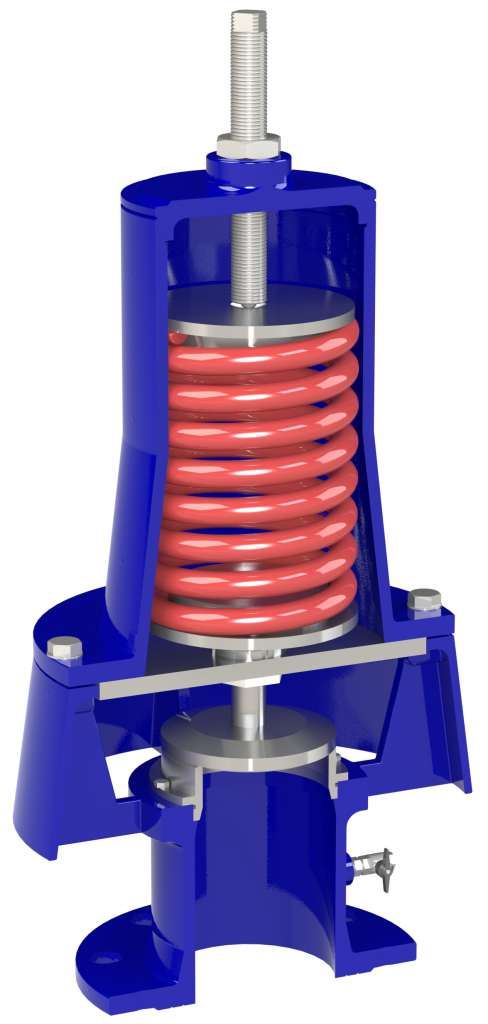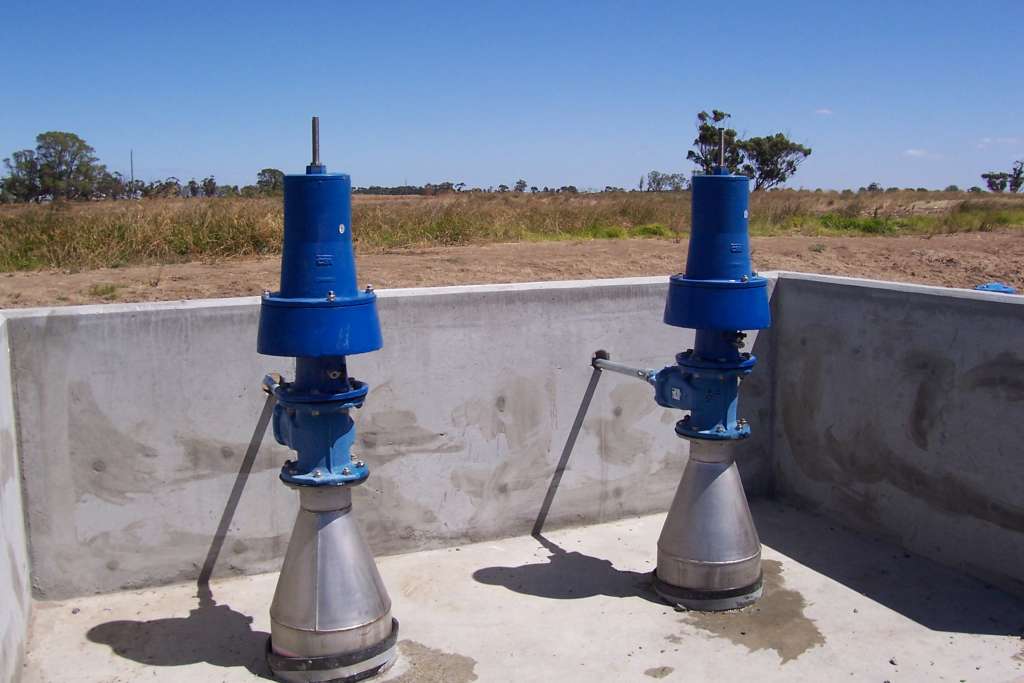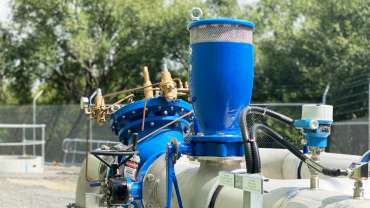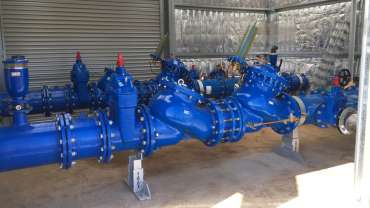A guide to mitigating transient surges in pipelines
![101_2863 A silver Bermad pipe above ground, next to a road.]()
Learn about 'fast moving transient pressures', including their causes, travelling speeds, and how to choose a valve to mitigate their impact.
In water transfer pipelines, there are many conditions that can occur to generate water hammer.
Water hammer conditions are typically caused by situations that, in turn, incur a rapid reduction in flow within the pipeline.
Examples of this phenomenon include:
- Power outages of pump stations: this instance can cause an instant reduction in flows, resulting in potential column separation and fast-returning pressure strikes.
- Fast-closing actuated valves: such as butterfly or plug valves.
- Column separation along a pipeline: where you may have pressure surges as the columns rejoin.
In any of these examples, the surge in pressure that runs along the pipeline is referred to as a ‘fast moving transient pressure’. These transient pressure events can move at speeds varying from 250 to 1200m/s, depending on the pipe material type and wall thickness.
To view the potential impact and behaviour of a fast moving transient pressure, watch this surge analysis of a pipeline that does not incorporate any surge-mitigating products:
The challenge is to fit a device that will remove these fast-moving transient pressures from the pipeline.
Choosing the right valve is critical
One method is to install an incredibly fast-acting pressure relief valve, such as the CSA valve model VRCA.
This valve is typically fitted directly on top of the pipeline and will open instantly in an event where the pressure line rises sharply above a normal operating condition.

Cross section view of a CSA VRCA fast-acting relief valve.
This valve is available in a range of sizes from 80mm up to 200mm. It is proven as an accurate and reliable solution in removing fast-travelling transient pressures from a pipeline.

A recent installation of some PN25 rated DN150 VRCA relief valves in Victoria.
To see the value and advantages of a correct implementation, watch this modelling software show the behaviour of a pipeline that incorporates surge-mitigating products:
Looking for additional support? We’re here to help
For further advice or support in relation to correctly sizing and incorporating fast-acting relief valves into pipelines, please contact your nearest Bermad office or make an enquiry.
Make enquiry
Online Enquiry Close
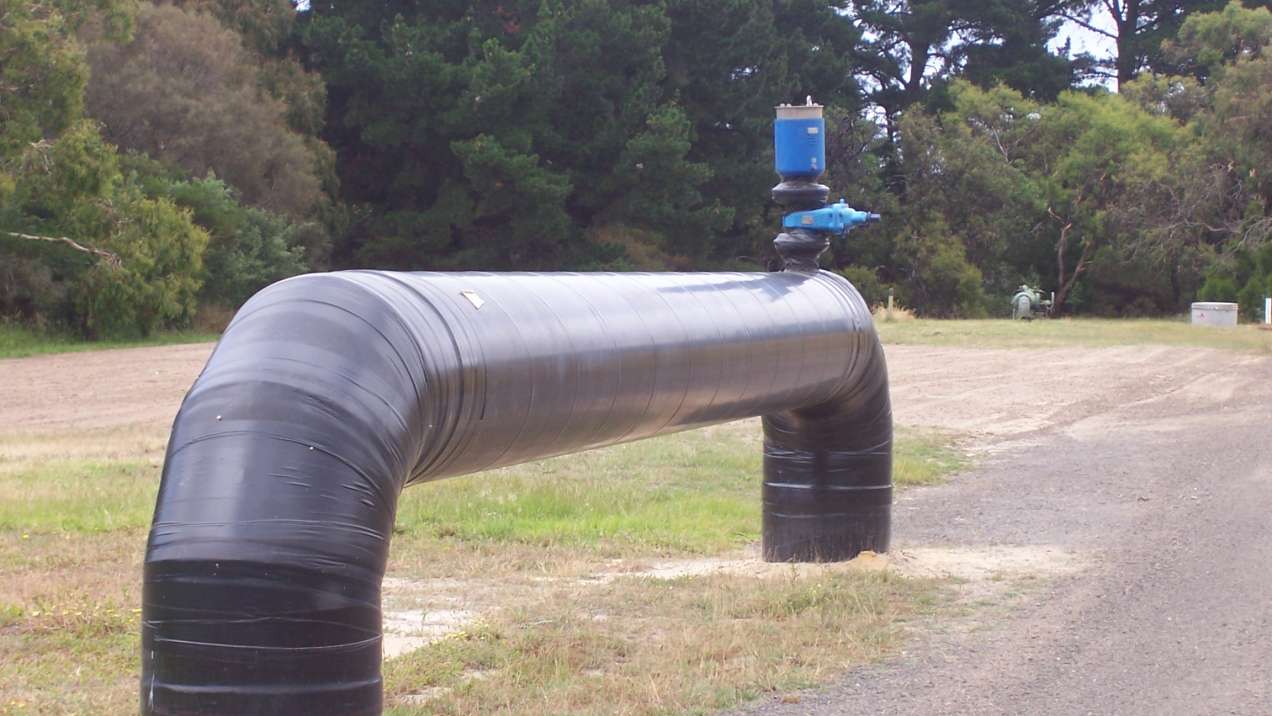
Learn about 'fast moving transient pressures', including their causes, travelling speeds, and how to choose a valve to mitigate their impact.
In water transfer pipelines, there are many conditions that can occur to generate water hammer.
Water hammer conditions are typically caused by situations that, in turn, incur a rapid reduction in flow within the pipeline.
Examples of this phenomenon include:
- Power outages of pump stations: this instance can cause an instant reduction in flows, resulting in potential column separation and fast-returning pressure strikes.
- Fast-closing actuated valves: such as butterfly or plug valves.
- Column separation along a pipeline: where you may have pressure surges as the columns rejoin.
In any of these examples, the surge in pressure that runs along the pipeline is referred to as a ‘fast moving transient pressure’. These transient pressure events can move at speeds varying from 250 to 1200m/s, depending on the pipe material type and wall thickness.
To view the potential impact and behaviour of a fast moving transient pressure, watch this surge analysis of a pipeline that does not incorporate any surge-mitigating products:
The challenge is to fit a device that will remove these fast-moving transient pressures from the pipeline.
Choosing the right valve is critical
One method is to install an incredibly fast-acting pressure relief valve, such as the CSA valve model VRCA.
This valve is typically fitted directly on top of the pipeline and will open instantly in an event where the pressure line rises sharply above a normal operating condition.
Cross section view of a CSA VRCA fast-acting relief valve.
This valve is available in a range of sizes from 80mm up to 200mm. It is proven as an accurate and reliable solution in removing fast-travelling transient pressures from a pipeline.
A recent installation of some PN25 rated DN150 VRCA relief valves in Victoria.
To see the value and advantages of a correct implementation, watch this modelling software show the behaviour of a pipeline that incorporates surge-mitigating products:
Looking for additional support? We’re here to help
For further advice or support in relation to correctly sizing and incorporating fast-acting relief valves into pipelines, please contact your nearest Bermad office or make an enquiry.
Make enquiry
